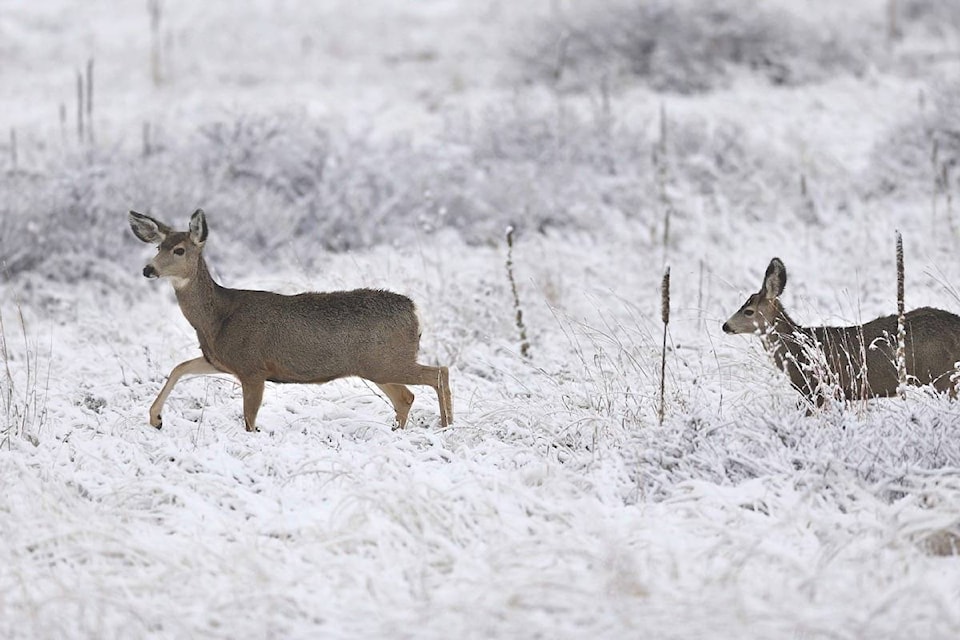More deer are calling Red Deer home this season, which could create driving obstacles on city streets.
Todd Nivens, executive director of the Waskasoo Environmental Education Society, said the deer population seen around Gaetz Lakes Sanctuary, near Kerry Wood Nature Centre, has grown to seven animals.
“We’re definitely seeing a couple more around. We’re seeing them daily. In past years, it’s been about three to five,” said Nivens, who also is seeing more deer tracks in the Michener Hill area and behind Lindsay Thurber high school.
Nivens said deer are frequently spotted in neighbourhoods such as Sunnybrook and Waskasoo. Piper, Waskasoo and Gaetz Creek ravines are attractive to deer, he said.
“All of those ravines are leading wildlife down to the river valley. They’re providing these safe spaces where animals can move from outside of the city, through vegetated spaces, through spaces with cover, and get down to the river valley so they can move up and down the river valley.”
Ian Warwick, executive director at Sunnybrook Farm Museum, said a herd of about six deer regularly hangs out on the museum grounds at night.
“I wouldn’t say I’ve seen more. It’s about the same as far as I can tell from my security cameras,” said Warwick about the deer that like to enter at the north end of the property, near where they can be a traffic hazard along 47th Avenue.
But this summer, deer were a big nuisance in community gardens, where they were gobbling up a lot of the vegetables residents were growing, he said.
Nivens said the best thing to do is avoid contact with deer, even though mating season is over, and watch for them near roadways.
“Just be aware we live in a city that has roadways that are bounded by forests. Anytime you have forests near creeks, you’re going to have wildlife. The upside of that is those creeks and ravines are keeping the deer away from the roads,” Nivens said.
Carol Kelly, executive director with Medicine River Wildlife Centre, warned people not to feed the animals.
“The less you encourage them to be in your yard, the more they will stay in the green spaces, where they are safer. Let them be deer,” Kelly said.
She said people should keep bird feeders out of reach of deer, and they should not worry wildlife will starve if they stop feeding them.
“Wildlife aren’t that stupid. If they find an excess of food somewhere, they will utilize that until it’s gone, and they will move somewhere else. Wildlife can survive very nicely without us.”
She said the centre has received few calls about injured deer this winter. Avoiding traffic is a learned behaviour urban deer tend to teach their young.
szielinski@reddeeradvocate.com
Like us on Facebook and follow us on Twitter
